Languaging: The Software of Belief
Pattern-breaking companies install radically different beliefs through language.
“No Software.” “Design is multiplayer.” “Belong anywhere.”
These phrases didn’t just describe products; they installed new worldviews. Salesforce made the cloud feel inevitable. Figma redefined creation as collaboration. Airbnb transformed hospitality into belonging.
Each of these breakthrough startups rewrote its market’s belief system through language. This is vital to success because building something new is only part of the battle. Others must see what you see — and change how they think, feel, and act.
The best founders know that language works like software for human minds. When someone adopts your vocabulary, they’re installing your beliefs. When they use your phrases, they’re running your assumptions. When your language becomes their language, your beliefs shape their reality.
This is languaging: installing new beliefs through the deliberate use of words. The right language doesn’t just explain your product—it installs beliefs that make your product inevitable.
When this works, pattern-breaking companies create monopolies of meaning. Google became a verb. “Ludicrous mode” changed beliefs about electric cars. These companies achieved a powerful network effect: one that operates at the level of belief itself. When everyone adopts your vocabulary, you define the future’s terms.
The Comparison Trap
New realities need new beliefs and new beliefs need new language.
Comparison language is tempting because it feels safe: instant comprehension looks like progress, clear competitors look like validation, familiar vocabulary feels like acceptance. But that safety is a trap. You’re agreeing to optimize inside someone else’s reality. The real choice isn’t confusion vs. clarity; it’s what’s easy today vs. what wins tomorrow.
When you say, “We’re better than X,” you’re not just borrowing their words; you’re accepting their worldview. That choice limits you to improving their map instead of drawing your own. Borrowed language can only produce a better version of someone else’s world. Create your own language, and you create your own world—and force others to learn your vocabulary.
Pattern-breaking companies don’t just have better ideas; they have ideas that require different beliefs to make sense. They choose temporary confusion in exchange for category power later.
Salesforce: Marc Benioff could have pitched “CRM, but streamlined.” Instead he led with “No Software.” The confusion was intentional – a refusal of the old frame that installed a new one.
Spotify: It sounded odd to claim you wouldn’t want to own music. Still, they didn’t retreat to “iTunes, but subscription.” They held the line until “music is access, not ownership” became the default belief.
Airbnb: “Stay in strangers’ homes” seemed crazy until the vocabulary (host, guest, Superhost) made the belief legible.
The Critical Question: Is your language patching existing beliefs or installing radically different beliefs?
How Languaging Ships Belief:
Define → Encode → Distribute
Installing new beliefs doesn’t have to be random. You can be intentional about:
Defining the legacy assumptions you’ll replace;
Encoding your new beliefs so they are persuasive;
and Distributing them until your new point of view becomes the new normal.
DEFINE the Beliefs You’ll Replace
Breakthrough startups don’t just improve what exists — they install a new kernel of belief that changes how people see reality. Every market runs on hidden assumptions. When you find them, refuse them, and replace them, your new kernel rewires the system around your logic. You can reframe through your product, market, customer, outcome, or mission. The best founders often reframe at multiple levels simultaneously, as demonstrated by Tesla in the chart below:
ENCODING Belief into Language Code
Encoding comes after defining because once you’ve clarified your new belief and the old assumption it replaces, you must express it in language people can understand and feel. Defining shapes the idea; encoding gives it power to spread, turning insight into words that move minds and hearts.
Encode to Win Minds
People process new ideas in different ways, so it’s good to consider how you can use language to open multiple “mental doors.” Each phrasing trick (like adding, subtracting, inverting, or fusing ideas) helps people see your new beliefs from a fresh angle.
Encode to Win Hearts
Winning hearts through language means going beyond logic to spark emotion. The linguistic moves shift people from curiosity to deep connection and lasting commitment to your belief:
Encode to Change Actions
Great languaging transforms abstract ideas into tangible calls to action that change habits, decisions, and rituals. The right language doesn’t just describe new actions; it prompts them naturally:
DISTRIBUTE Through Living Proof
Great distribution isn’t just about marketing programs; it’s about spreading new belief through every touchpoint. Tesla wins mindshare without running ads because it distributes a worldview, not just features. When belief is well-encoded, every interaction—product, demo, community, or content—becomes a conversion moment. The product proves the belief; demos make it tangible; community turns it social; content reinforces it as doctrine. Each channel carries the same idea in different forms, building emotional conviction through repetition and proof. Companies that win use different marketing and communication levers to install belief systems that people experience, share, and embody until the worldview itself becomes the brand.
Language in Beta
Both your internal and external language will evolve through actual use.
Your first version of language can always be improved. Airbnb started with “book someone’s home” then improved their message with “stay with locals” and then evolved to “belong anywhere.” Amazon went from “Earth’s biggest bookstore” to “Everything Store.” Each evolution expanded what seemed possible.
Your users are often better at naming your features than you are. Twitter’s users invented “retweet.” Google’s users helped make “Google” a verb. When people create their own words for what you built, pay attention. They might be handing you the language that actually spreads. The best founders don’t defend their original words; they lean into unexpected opportunities to enable their core beliefs to spread further and more rapidly.
It’s best to think of your language the same way you think of your product or website — something you keep improving and updating. Just as you ship new features or tweak small details online, you can refine parts of your message, adjust your phrasing, or test new ways of sharing your ideas. Keep experimenting with your wording and framing, especially with early supporters who can help you see what truly resonates.
Reality Check
Language is not pixie dust. It can’t compensate for a product that doesn’t work, timing that’s off, or a market that doesn’t exist. Belief installation complements product truth and distribution; it’s not a substitute for them. But when your product is real, the right language pulls adoption forward months or years by changing what people think is possible.
Those Who Install New Beliefs Define the Future
Every startup faces a simple choice: patch existing beliefs or install radically different ones.
Patch existing beliefs, and you’ll compete forever on someone else’s terms. You’ll get the knowing nods, the easy press, and the clear category. And you’ll never escape their shadow.
Install new beliefs, and you’ll face confusion, skepticism, and lonely nights wondering if you’re crazy. But if you hold firm, you’ll make their game irrelevant. You’ll define what the game is.
Products can be copied. Features can be cloned. But once your beliefs become how people think about reality, you’ve achieved something far more powerful than lock-in. You’ve changed what seems possible.
Salesforce still owns “No Software.” Figma owns “Multiplayer Design.” These aren’t just slogans – they’re beliefs that became reality.
Remember: Language is the software that installs belief. The confusion period is the installation process. When your beliefs become everyone’s beliefs, you don’t just own a product or a category. You own how people think about what’s possible.



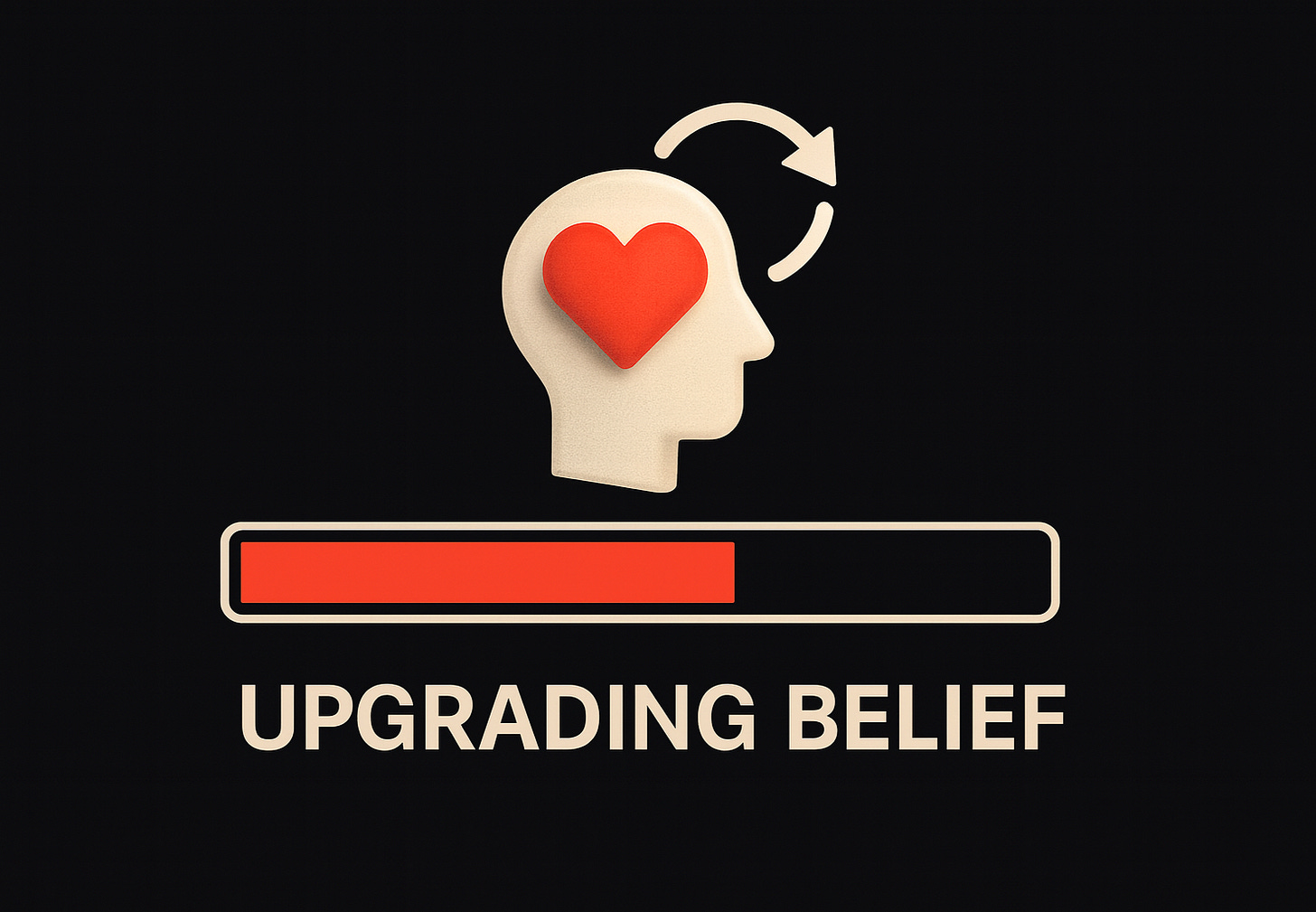
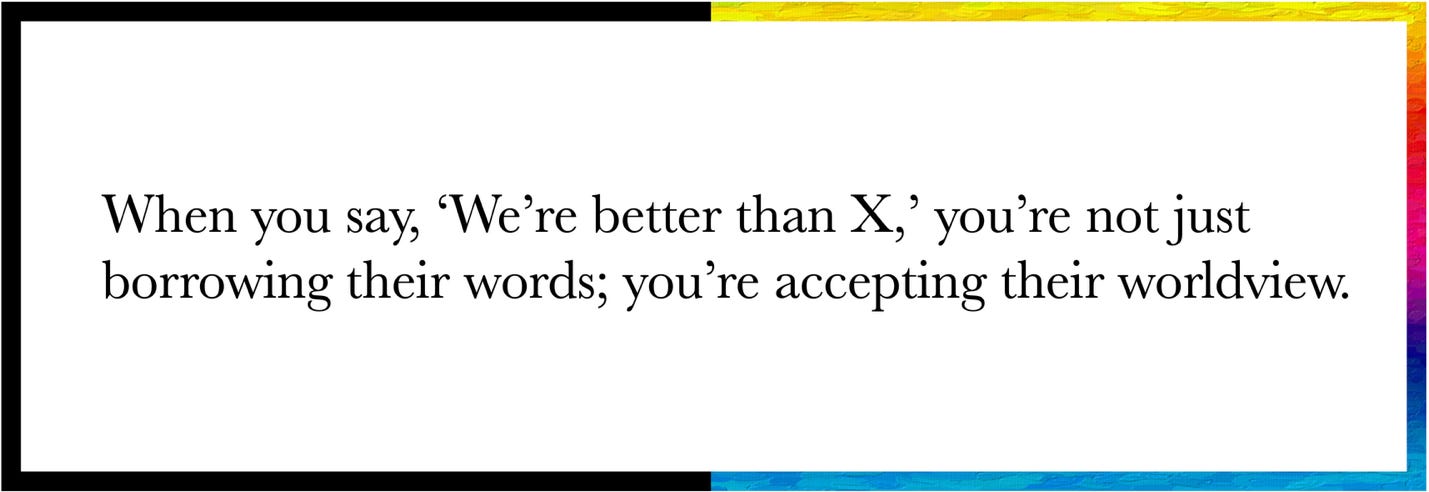
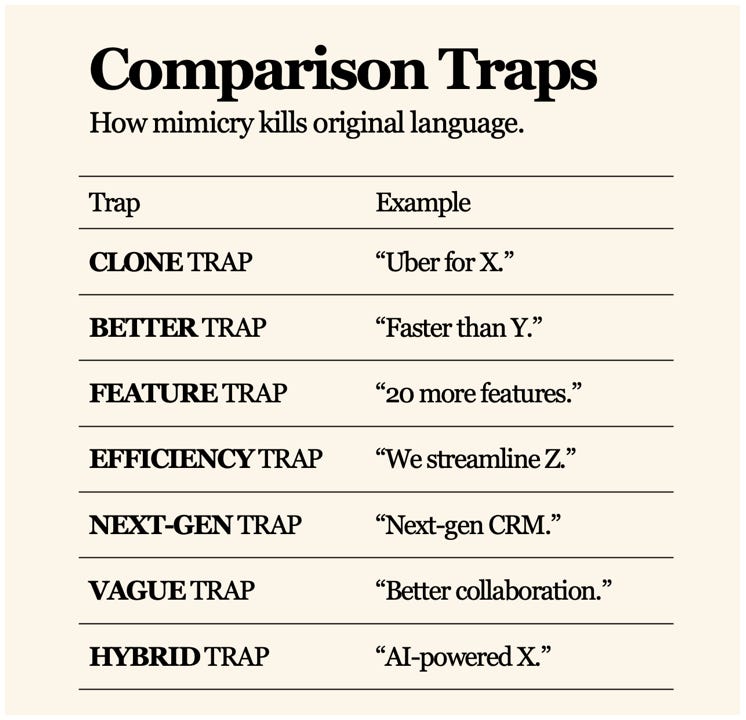
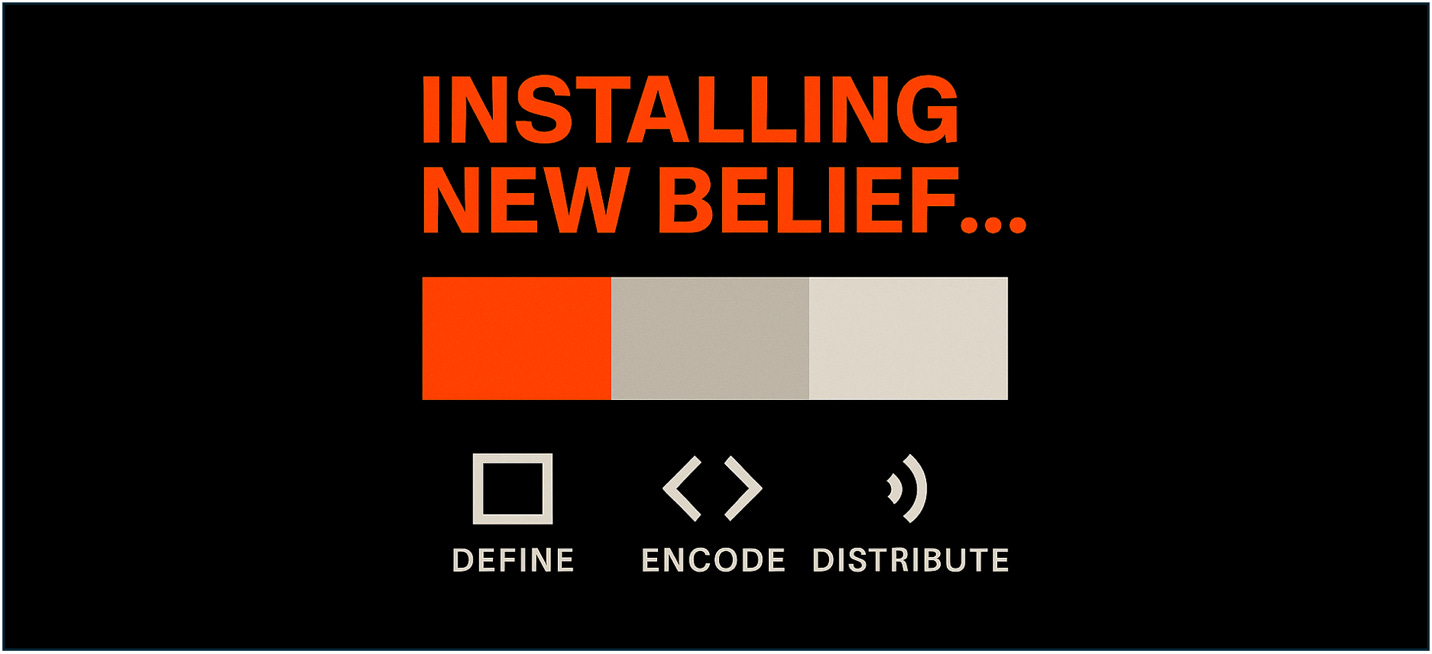
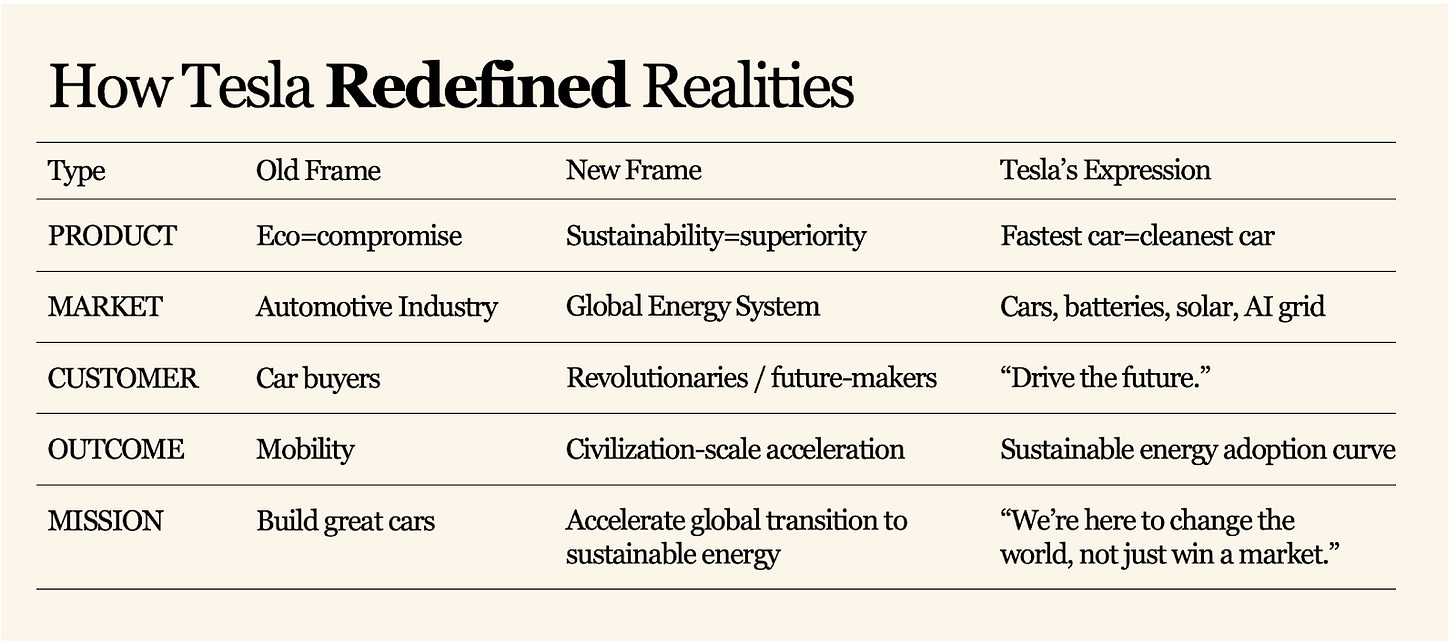
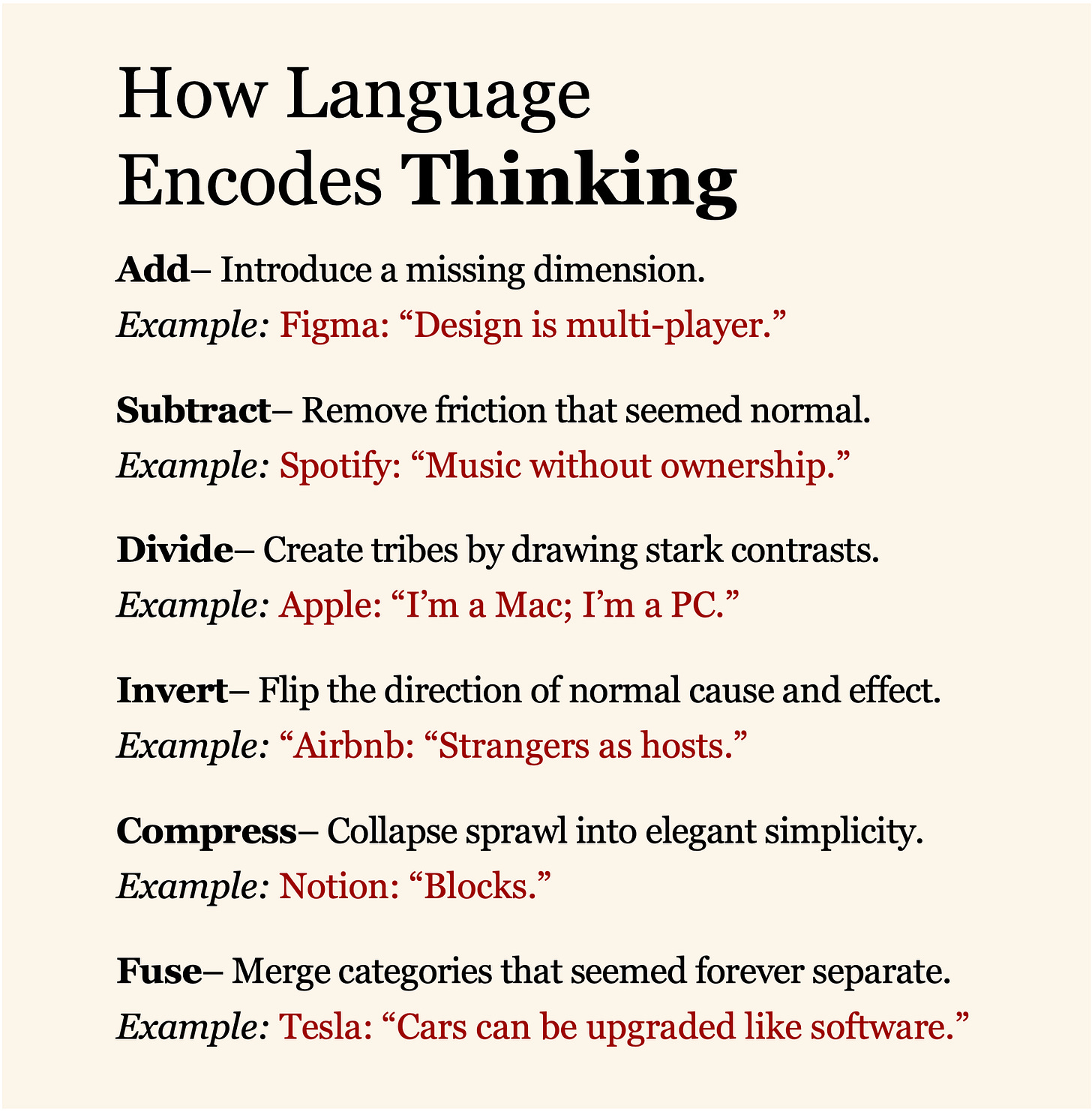
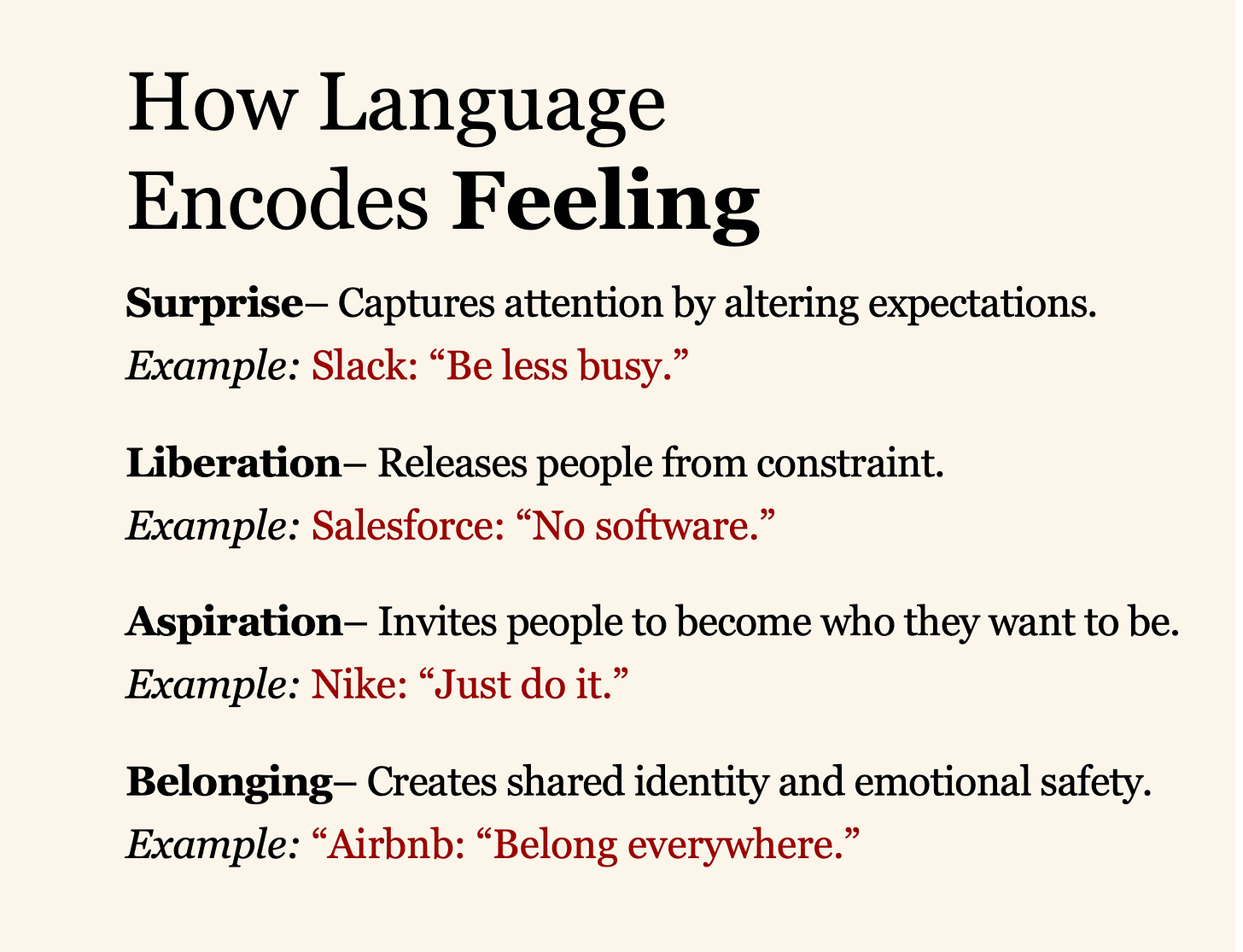
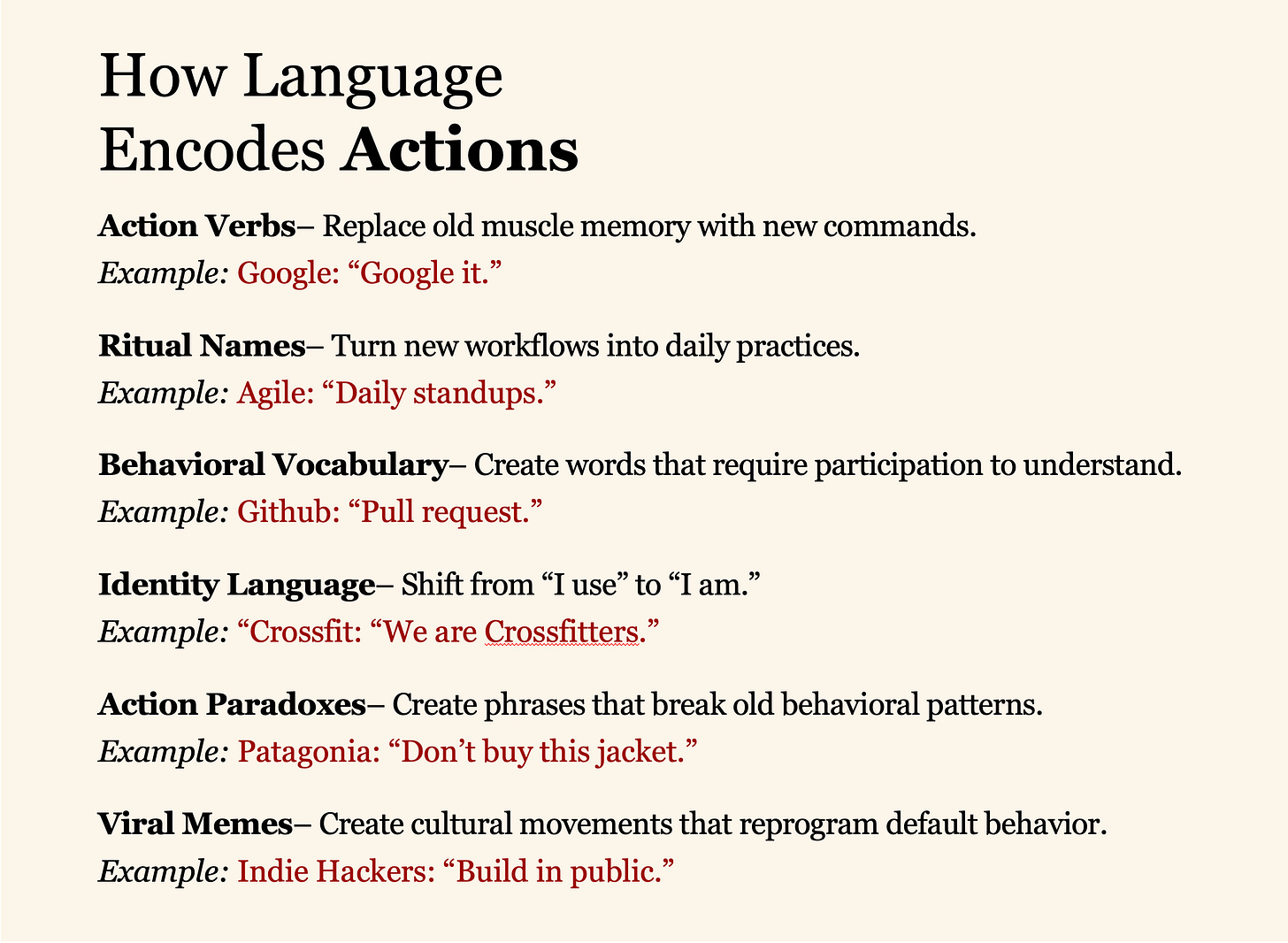
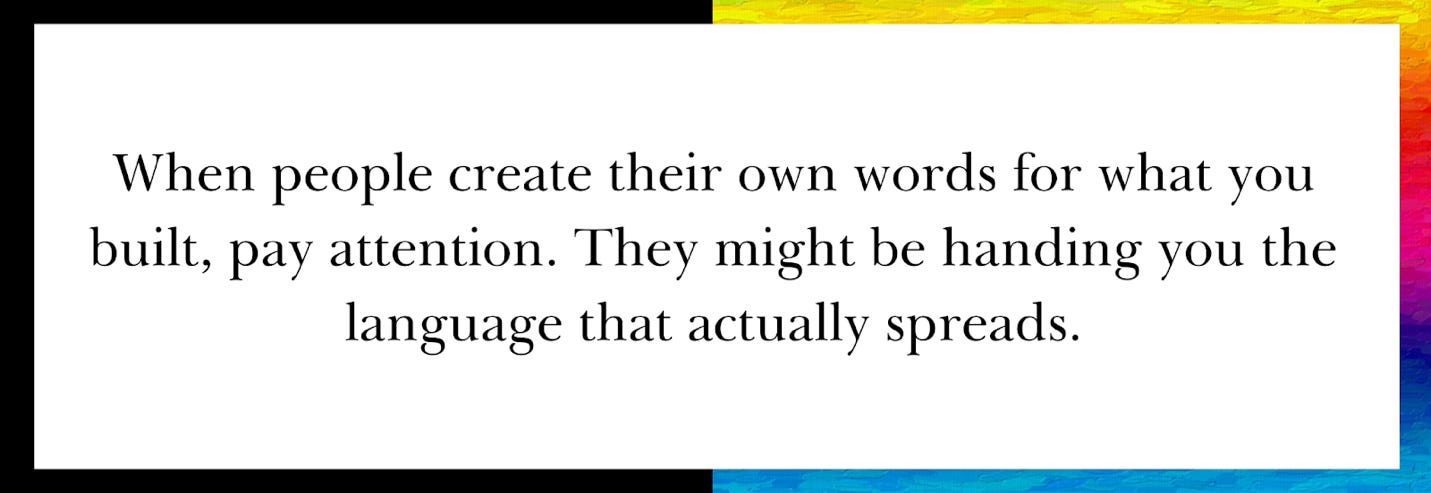
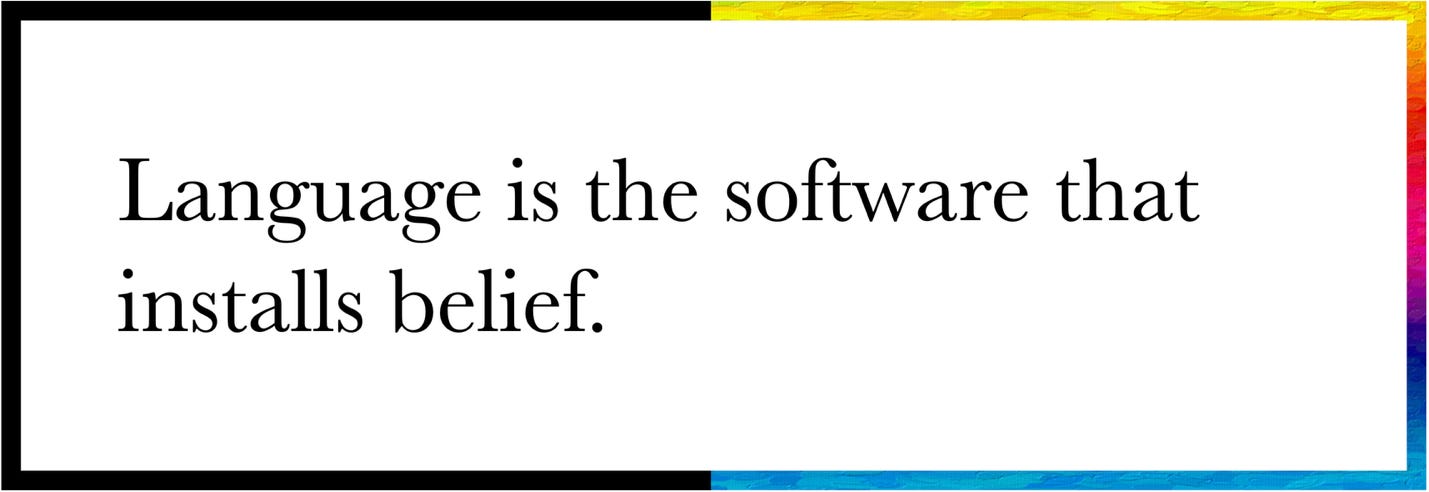
Love this. Great affirmation for us as storytellers. 🫶
OMG that was again amazing text! Thank you Mike!:) We at Graani Software are making revolution in food industry and today we are starting totally new way of " Food Box"-thinking first here in Finland, later all over the Europe. Thank you Mike about the idea" Change how people think, feel and act" This it what we are doing! We help people to eat more healthier. " Back to the roots and no more ultraprosessed "food" anymore that makes people sick". You are our biggest inspiration.